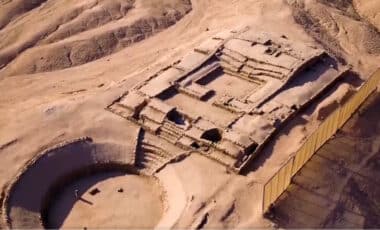I’ve always enjoyed a good war movie, particularly the historic ones. Where more modern military films, such as Jarhead and Black Hawk Down, fail at capturing the more dramatic and heroic tones of the American military experience of a different era, those set in either World War seem to succeed. It’s movies like Saving Private Ryan and Letters From Iwo Jima that inspire, make you shed a few tears and then develop a short burst of media-fueled “ultra-patriotism.” After seeing Mel Gibson’s Hacksaw Ridge in theaters, I can honestly put it within the list of at least my top five favorite war movies.

Andrew Garfield in Hacksaw Ridge (2016).
I went in without any prior research. I had seen the trailer on television a few times, but I didn’t want to develop any preconceived notions about the experience I was in for. Honestly, my first thought was that Andrew Garfield is, in fact, not a likable actor at all. He is not nor does he portray the red-blooded, all-American, macho masculine soldier. He is awkward, odd, uncomfortable and within the first forty-five minutes of the film, you respect him for it. Andrew Garfield’s character, Desmond T. Doss, is plagued by a childhood of violence at the hands of his abusive father, who served in World War I. However, the young man is instilled with a sense of decency and relies heavily on his religion as a Seventh-day Adventist.
While the initial build up in the film is necessary in order to feel the full impact of the resolution, it does seem a bit drawn out. Thankfully, the humorous character of Vince Vaughn breaks up the monotony. Audiences watch Doss fall in love, see his brother and friends head to the frontline and then himself enlist as a medic, all before we glimpse the first signs of conflict.
Doss heads for training, where he excels in many ways, but he’s quickly ostracized for his refusal to train with a rifle, in addition to his other religious beliefs. His commanding officers attempt to force him out through what would be seen today as blatant discrimination and abuse, but Doss stands firm until he is eventually arrested for insubordination. Facing jail time, things are looking grim, until Doss’ father plays the unlikely hero, providing a legal letter stating that Doss’ religious beliefs are protected under the Constitution.
In a very sudden and rough transition, viewers are transported across space and time to Doss’ arrival in the Pacific Theatre. It’s there, however, that the film really shines. In a dramatic and excellently choreographed display, audiences are treated to Doss’ division’s initial take of Hacksaw Ridge, during which there are heavy losses on both the U.S. and Japanese side. While some reviewers point to “unnecessary” violence at this point and throughout the rest of the film (really the only reason it has an ‘R’ rating), I felt that, without it, most of the message would have been lost.
The next day, the Japanese launch a counterattack, during which the Americans flee. Only one individual is left, refusing to leave the wounded and dying — Doss. A good chunk of the film focuses on his lone efforts to save his suffering comrades, facing off the Japanese by himself, still refusing to wield a weapon, hauling men one by one off the ridge to help below. Over more than 24 hours, Doss rescues 75 men entirely by himself.
In the end, Doss is injured himself, but not without first gaining the immense respect of his comrades who had once called him a coward for refusing to carry a gun. The film’s end is abrupt, but pre-credit photos and text tell the rest of the real story behind Desmond T. Doss, who was the very first conscientious objector to receive the Medal of Honor.
In Hacksaw Ridge, Mel Gibson was truly able to combine an incredible story with fantastic cinematics, resulting in a war film that every military history enthusiast will love.








